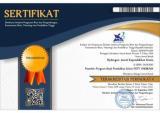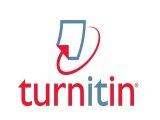Implementation of Project-Based Learning: Utilizing Natural Rocks as Waste Absorbents
Abstract
Keywords
Full Text:
PDFReferences
Allabad, E. . (2021). Efficacy Asesment of Natural Zeolit Containing Wastewater on the Adsorption Behavior of Direct Yellow 50 from Equilibrium, Kinetics and Thermodynamic Studies. Arabian Journal of Chemistry, 14(4), 103–114.
Fitriana, N. (2019). Pembuatan Zeolit alam Teaktivasi HCl dan Karakterisasinya. UNESA Journal of Chemistry, 8(1), 17–19.
Georgiev, D., Bogdanov, B., Angelova, K., Markovska, I., & Hristov, Y. (2009). Syntesis Zeolit Structure, Classification, Current Trends in Zeolite Syntesis Review. International Science Conference, 4–5.
Karepesina, N., & Manuhutu, J. (2023). Application of Problem Based Learning (PBL) on Hydrocarbon Compound Lesson to Increase Student Learning Outcome. Hydrogen : Jurnal Kependidikan Kimia, 11(1), 51–59.
Manasikana, O. ., Khery, Y., Nufida, B. A., Ahzan, S., & Efendi, I. (2022). Respon Mahasiswa Calon Guru IPA dalam Penerapan Pembelajaran Proyek Kimia. Empiricism, 3(2), 392–398.
Manasikana, O. A., Af’idah, N., Mayasari, A., Faizah, G., Liana, M. N. T. L., & Junaidi. (2023). Scientific Learning Throught The Edu Eco Approach As An Alternatif Improving Student Knowledge and Skills. Serambi Ilmu, 24(1), 1–13.
Manasikana, O. A., Wijayadi, A. W., & Mayasari, A. (2022). Keefektifan Pembelajaran Proyek Terhadap Keaktifan dan Kreatifitas Mahasiswa Mata Kuliah Model Pembelajaran Inovatif IPA Materi Kimia SMP. Zarah, 10(1), 66–72.
Manasikana, O., Af’idah, N., Bakar, A., Andalia, N., & Safmila, Y. (2023). The Corelation Between Project Learning Models and Student Activities in Online Learning for Innovative Learning Model Courses. Prisma Sains : Jurnal Pengkajian Ilmu Dan Pembelajaran Matematika Dan IPA IKIP Mataram , 11(1), 224–231.
Mara, A., Wijaya, K., & Mudasir, W. . (2016). Effect of Sulfuric Acid Treatment and Calcination on Natural Zeolit of Indonesia. Asian Journal of Chemistry, 28(1).
Mardhatillah, Q., Copriady, J., & Futra, D. (2023). Enhancing Students Oral and Written Communication Skills Throught Discovery learning Model : A Study on reduction-Oxidation. Hydrogen: Jurnal Kependidikan Kimia, 11(1), 15–21.
Salima, N., Hairida, H., Lestari, I., Hadi, L., Masriani, M., & Ulfah, M. (2023). Analysis of Students Predicting Skills in the Concept of Reaction Rate. Hydrogen : Jurnal Kependidikan Kimia2023, 11(1), 95–105.
Sambasevam, K., Yunos, M., Rasyid, H., Bahanin, S., Suhaimi, N., Raov, M., & Shahabuddin, S. (2020). Optimization of Natural Zeolit Color Extraction of Dragon Fruit. Scientific Research Journal, 17(2), 33–44.
Taufiq, A., Teraningtyas, A., Kusumawati, D. ., & Supardi, Z. A. I. (2022). Nanosized Fe3O4 SiO2 Chore Shell FabricatedFrom Natural Sand Magnetic Properties and Aplicatoion for Die Adsorption. Enginering and Applied Science NanosiResearch, 49(3), 340–352.
Widiyanti, S., & Dyah, R. (2021). Efektifitas Pembelajaran Berbasis Proyek Terhadap Kreativitas Mahasiswa di Pandemi Covid 19. Journal IT CIDA, 7(1), 35–47.
DOI: https://doi.org/10.33394/hjkk.v11i2.7423
Refbacks
- There are currently no refbacks.

This work is licensed under a Creative Commons Attribution-ShareAlike 4.0 International License.





